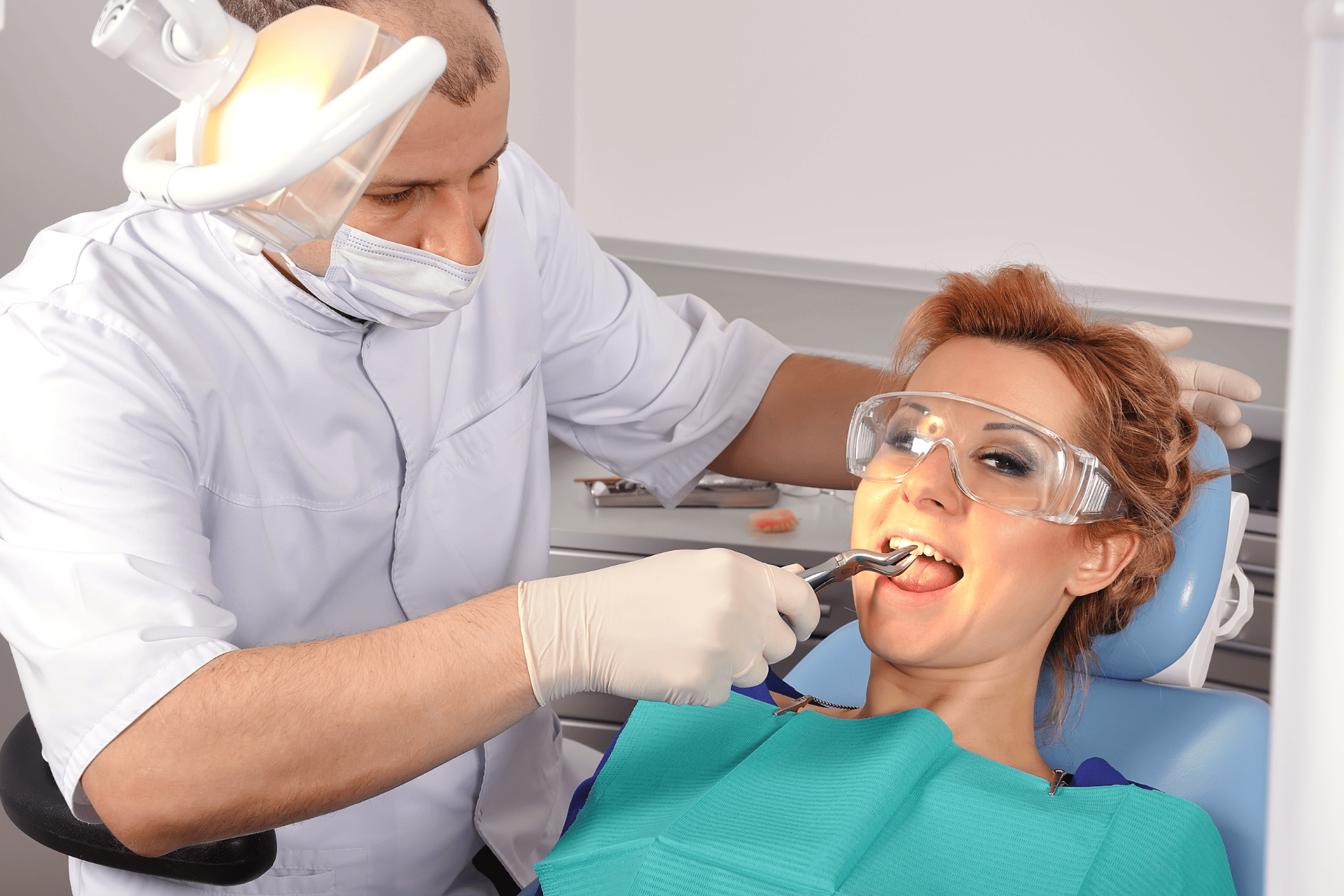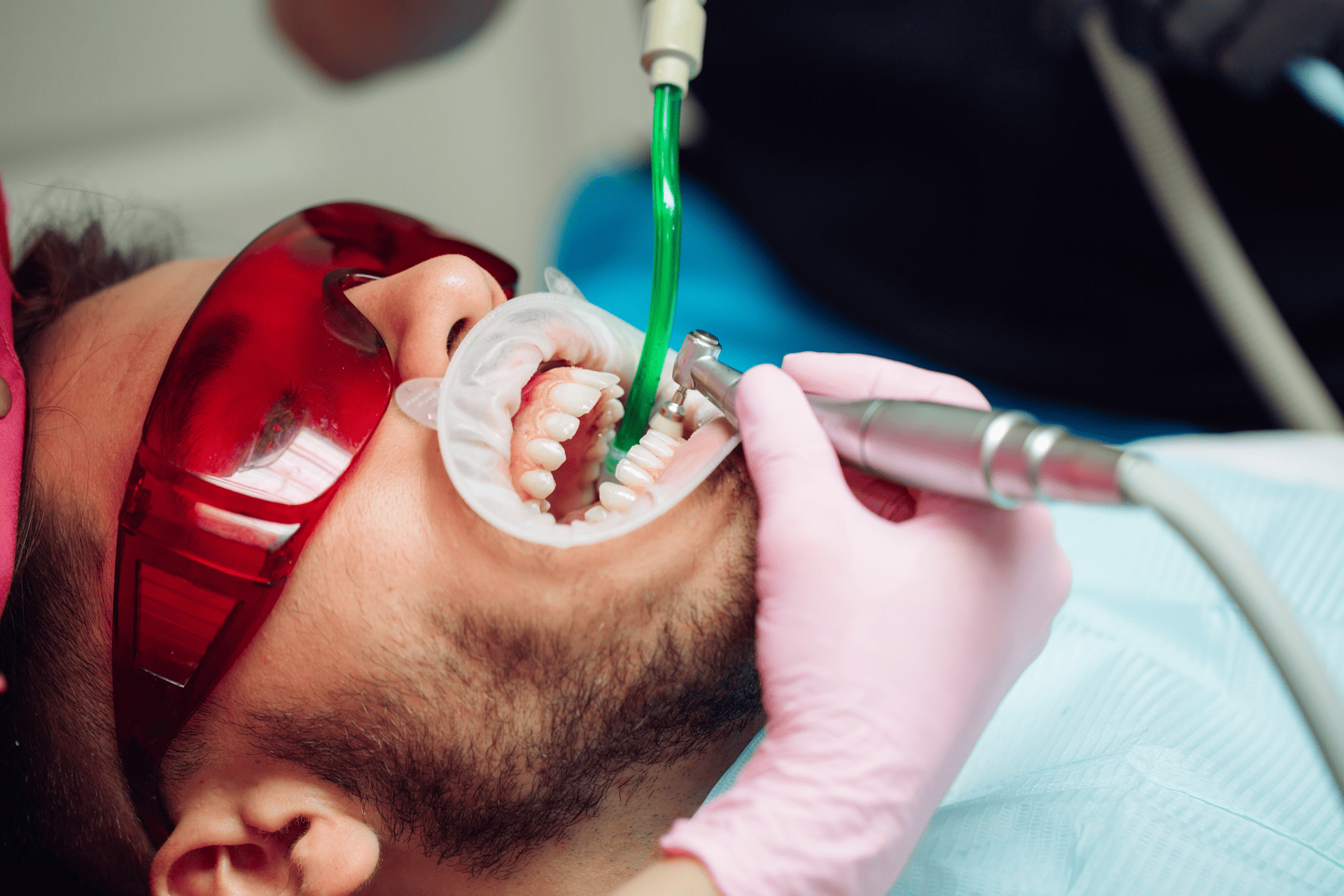How Long Does It Take for Gums to Heal After Extractions?

Tooth extractions are a common dental procedure that can lead to questions about the healing process. Understanding how long it takes for gums to heal after extractions is essential for patients to manage their recovery effectively. This article delves into the different stages of healing, factors that affect recovery time, and what to expect during the healing timeline. Additionally, we'll discuss how to manage pain and discomfort, prevent complications, and ensure a smooth and swift recovery.
Key Takeaways
- The gum healing process after an extraction involves initial recovery, soft tissue healing, and bone remodeling, which can vary in duration.
- Healing time is influenced by individual health conditions, the complexity of the extraction, and the quality of post-operative care and hygiene.
- Typically, the first 24 hours are crucial for clot formation; one week is needed for initial soft tissue healing, and long-term observation is necessary for complete recovery.
- Managing pain and discomfort post-extraction includes immediate care, appropriate medication, and home remedies, with guidance on when to seek dental advice.
- Preventing complications is key and involves avoiding actions that can lead to dry socket, reducing infection risks, and following proper nutrition to support healing.
Understanding the Healing Process
Initial Recovery Phase
The initial recovery phase following tooth extractions is critical for setting the stage for successful healing. During this period, it's essential to follow the guidelines provided by your dental professional to ensure a smooth recovery process. The importance of this phase typically involves several key steps:
- Resting and allowing your body to heal
- Keeping the extraction site clean
- Managing bleeding with gauze and gentle pressure
- Applying ice packs to reduce swelling
It is during the first few hours post-extraction that the body initiates the healing process, starting with blood clot formation at the extraction site. This clot is vital as it protects the underlying bone and nerves, and aids in the prevention of complications such as dry socket.
Adhering to these steps not only promotes faster healing but also minimizes discomfort. Remember, the care you take during the initial recovery phase can significantly influence the overall healing time.
Soft Tissue Healing
After a tooth extraction, the soft tissue in the mouth begins a critical phase of the healing process. This is when the gum tissues start to close over the extraction site, protecting it from infection and allowing for the regeneration of new tissue. Proper care during this stage is essential to ensure a smooth recovery and prevent complications.
- The first few days post-extraction are crucial for soft tissue healing.
- Swelling and discomfort should gradually subside as the gums heal.
- It's important to follow the aftercare instructions provided to promote optimal healing.
During the soft tissue healing phase, patients may notice changes in the texture and sensitivity of the gums around the extraction site. This is a normal part of the healing process, and the gums should eventually return to their normal state.
Continued oral hygiene, while being gentle around the extraction site, is vital. Rinsing with salt water or a prescribed mouthwash can aid in the healing process. Avoiding certain foods and activities, as recommended by your dentist, will also help ensure that the soft tissue heals properly after tooth extractions.
Bone Remodeling After Extraction
Following a tooth extraction, the body initiates a remarkable process known as bone remodeling. This phase is crucial for maintaining the integrity of the jawbone and preparing the site for potential future dental procedures, such as implants or bridges.
- The bone healing process begins immediately after the extraction, with the formation of a blood clot.
- Over the next several weeks to months, the jawbone undergoes a natural reshaping and healing process.
- The final contour of the jawbone may take several months to stabilize, reflecting the body's adaptive capabilities.
At Majestic Dentistry, we understand the importance of this phase in the overall success of tooth extractions. Our team provides guidance and support to ensure optimal healing and preparation for any advanced dental treatments that may follow.
Ensuring that the extraction site is well-maintained and free from infection is key to successful bone remodeling. Regular follow-ups with your dentist are essential to monitor the healing process.
Factors Influencing Healing Time
Individual Health Conditions
The healing time after tooth extractions can vary significantly depending on individual health conditions. Patients with strong immune systems and good overall health typically recover more quickly. Conversely, those with underlying health issues, such as diabetes or immune deficiencies, may experience a slower healing process.
- Diabetes: Can impair blood flow and wound healing.
- Immune Deficiencies: May lead to increased risk of infection.
- Smoking: Slows down the healing process and can lead to complications.
It's crucial to inform your dentist of any health conditions you have before undergoing a tooth extraction. This allows for a personalized care plan that can address specific health concerns and promote better healing outcomes.
Remember, maintaining a healthy lifestyle and following your dentist's post-operative care instructions are key to ensuring a smooth recovery.
Complexity of the Extraction
The complexity of tooth extractions can significantly affect the healing time of the gums. Simple extractions, where the tooth is visible and easily accessible, typically lead to quicker recovery. In contrast, surgical extractions, which may involve removing gum tissue, bone, or both, can extend the healing process.
- Simple extractions: less invasive, shorter healing time
- Surgical extractions: more invasive, longer healing time
It's crucial to understand that each extraction is unique, and the approach is tailored to minimize healing time while ensuring patient comfort.
The key to a smooth recovery is understanding the nature of the extraction and following your dentist's post-operative instructions carefully.
Post-Operative Care and Hygiene
The success of healing after tooth extractions significantly depends on the post-operative care and hygiene practices adopted by the patient. Proper care can prevent infections and complications, ensuring a smoother and quicker recovery. Here are some essential steps to follow:
- Gently rinse your mouth with salt water after 24 hours to promote healing.
- Avoid using a straw, smoking, or spitting forcefully for at least 72 hours post-extraction.
- Stick to soft foods and gradually reintroduce solid foods as your comfort allows.
Maintaining oral hygiene is crucial, but it should be done with care. Brush your teeth gently around the extraction site and avoid disturbing the clot that forms in the socket.
Remember, the goal is to keep the extraction site clean and free from food particles and bacteria without causing irritation.
Typical Healing Timeline
First 24 Hours After Extraction
The initial 24 hours following tooth extractions are crucial for setting the stage for proper healing. During this period, a blood clot forms in the extraction site, which is essential for protecting the underlying bone and nerves, and for beginning the healing process.
- Avoid vigorous rinsing or spitting to prevent dislodging the blood clot.
- Refrain from smoking or using straws, as the suction can disturb the clot.
- Apply an ice pack to the cheek intermittently to reduce swelling.
- Rest and keep your head elevated to minimize bleeding.
It's important to follow the specific aftercare instructions to ensure a smooth recovery. Any strenuous activity should be avoided to prevent bleeding and aid in the formation of a stable clot.
If bleeding persists or pain escalates, it's essential to contact your dentist. The first day post-extraction sets the tone for your recovery, so adhering to these guidelines is paramount.
One Week Post-Extraction
By the time a week has passed since the tooth extractions, patients typically notice a significant reduction in discomfort and swelling. The initial healing phase, where the gum tissue starts to close over the extraction site, is nearing completion. At this stage, it's important to continue following the post-operative care instructions provided by your dentist to ensure proper healing.
- Continue to avoid strenuous activities that might disturb the site.
- Maintain a soft food diet to prevent irritation.
- Gently rinse your mouth with salt water to aid healing and reduce the risk of infection.
Regular dental check-ups are essential to monitor the healing process and address any concerns promptly.
It's normal to still experience some mild tenderness and occasional bleeding, but these symptoms should be diminishing. If you notice any signs of infection or persistent pain, it's important to contact your dentist immediately.
Long-Term Healing and Observation
After a tooth extraction, the long-term healing phase is crucial for ensuring the integrity of the oral cavity and preparing it for any future dental work, such as implants or bridges. The importance of regular check-ups during this period to monitor the healing process and to detect any potential complications early cannot be overstated.
- The gum tissues and surrounding bone structure can take several months to fully stabilize.
- It's essential to maintain good oral hygiene to support healing and prevent infection.
- Any unusual changes in the extraction site should be reported to your dentist immediately.
While the initial recovery may seem swift, the long-term healing after tooth extractions requires patience and careful observation. It's a gradual process that can be influenced by various factors, including the patient's overall health and lifestyle choices.
During this phase, it's also important to be vigilant for signs of oral health issues that could affect healing. Oral cancer signs include non-healing ulcers, red/white patches, voice changes, bad breath, swollen lymph nodes, appetite loss, pain, bleeding, and jaw stiffness. Seek medical attention for persistent symptoms.
Managing Pain and Discomfort
Immediate Post-Surgical Care
Following tooth extractions, immediate post-surgical care is crucial for a smooth recovery and to prevent complications. Here are a few essential steps to ensure optimal healing:
- Apply a cold compress to the cheek adjacent to the extraction site to reduce swelling.
- Bite down gently on a gauze pad for 30-60 minutes to control bleeding.
- Rest with your head elevated to minimize bleeding and swelling.
It's important to follow these steps as they can significantly affect the healing process. Avoiding strenuous activity for the first 24 hours is also advised to prevent dislodging the blood clot that forms in the extraction socket.
Adhering to these guidelines will help manage pain and support the body's natural healing mechanisms. Remember, the initial care taken can have a lasting impact on your recovery timeline.
Medication and Home Remedies
After tooth extractions, managing pain and discomfort is a priority for patients. Over-the-counter pain relievers, such as ibuprofen or acetaminophen, are commonly recommended to alleviate discomfort. It's important to follow the dosage instructions provided by your dentist or the medication's packaging.
Swelling can be reduced through the application of a cold compress to the cheek area. This should be done intermittently for the first 24 hours post-extraction. Additionally, saltwater rinses can aid in the healing process by keeping the extraction site clean and free from debris.
- Rest is crucial; ensure you give your body enough time to heal.
- Stick to soft foods to avoid irritation at the extraction site.
- Maintain oral hygiene with gentle brushing and avoid the surgical area.
These home remedies, when combined with professional advice, can significantly improve comfort during the healing period. However, if pain persists or worsens, it is essential to seek emergency dental care to address potential complications.
When to Contact Your Dentist
After tooth extractions, it's crucial to monitor your recovery and be aware of any signs that may warrant a call to your dentist. If you experience severe pain, excessive bleeding, or signs of infection, such as fever and swelling, it's important to seek professional advice immediately.
- Persistent pain that doesn't improve with medication
- Bleeding that continues for more than 24 hours
- Visible signs of infection, including pus or an unpleasant taste
- Difficulty in swallowing or breathing
Remember, while some discomfort is normal, any extreme changes in your condition should be promptly addressed. Your dentist is committed to ensuring a smooth recovery process and is available to address any concerns you may have post-extraction.
It's better to be cautious and get in touch with your dentist if you're unsure about your symptoms. Timely communication can prevent complications and ensure that your gums heal properly.
Preventing Complications
Avoiding Dry Socket
One of the most common complications following tooth extractions is a painful condition known as dry socket. To prevent this, patients are advised to follow a few critical steps:
- Avoid vigorous rinsing or spitting for the first 24 hours to ensure the formation of a stable blood clot.
- Refrain from smoking or using tobacco products, as these can impede the healing process.
- Steer clear of using straws, as the suction can dislodge the blood clot protecting the extraction site.
It's essential to follow your dentist's instructions closely after an extraction to minimize the risk of dry socket. This includes adhering to a soft food diet and maintaining gentle oral hygiene in the days following the procedure.
By taking these precautions, patients can significantly reduce the likelihood of experiencing dry socket, ensuring a smoother recovery after their tooth extractions.
Minimizing Infection Risk
After tooth extractions, it's crucial to minimize the risk of infection to ensure a smooth healing process. Proper oral hygiene is paramount; however, it's important to be gentle around the extraction site to avoid disrupting the clot that is essential for healing.
- Rinse your mouth with saltwater solution or an antimicrobial mouthwash as recommended by your dentist.
- Avoid using a straw, smoking, or spitting forcefully for at least 24 hours after the procedure.
- Stick to soft foods that are less likely to irritate the wound or lodge in the site.
Keeping the extraction site clean is a delicate balance between maintaining oral hygiene and allowing the natural healing process to occur without interruption.
At Majestic Dentistry, we emphasize the importance of following a tailored post-operative care plan. This includes monitoring for signs of infection such as increased pain, swelling, or fever, and contacting your dentist if these symptoms arise. By taking these precautions, you can help ensure a complication-free recovery.
Ensuring Proper Nutrition for Healing
After tooth extractions, it's essential to focus on your diet to promote healing. Proper nutrition is not just beneficial for overall health; it's critical for the recovery of your gums. Foods rich in vitamins and minerals can help the body repair tissues and fight off potential infections.
- Consume soft foods that are easy to chew and swallow, such as yogurt, applesauce, and smoothies.
- Include protein-rich foods like eggs and tofu to support tissue repair.
- Stay hydrated with plenty of water and avoid alcoholic or carbonated beverages.
Remember, while your gums are healing, it's important to avoid foods that are hard, crunchy, or require significant chewing. These can disrupt the clotting process and delay healing. By following these dietary guidelines, you can help your gums recover more efficiently and reduce the risk of complications.
Frequently Asked Questions
-
How long does the initial recovery phase after a tooth extraction typically last?
The initial recovery phase, during which acute swelling and bleeding are managed, typically lasts for about 24 to 48 hours after the extraction.
-
What does soft tissue healing entail and how long does it take?
Soft tissue healing involves the regeneration of gum tissue over the extraction site. This process can take about 3 to 4 weeks for the gum tissue to heal sufficiently.
-
How long does bone remodeling take after a tooth extraction?
Bone remodeling is a longer process that can take several months to a year after the extraction as the jawbone adjusts to the change and fills in the space where the tooth once was.
-
What factors can affect the healing time of gums after an extraction?
Healing time can be influenced by individual health conditions, the complexity of the extraction, the patient's age, smoking status, and adherence to post-operative care and hygiene practices.
-
What are some effective ways to manage pain and discomfort after a tooth extraction?
Pain and discomfort can be managed with prescribed painkillers, over-the-counter medication, ice packs, and home remedies like saltwater rinses. It's important to follow the dentist's instructions for post-operative care.
-
How can I prevent complications such as dry socket and infections after an extraction?
To prevent complications, avoid smoking, follow a soft food diet, maintain oral hygiene without disturbing the extraction site, and follow your dentist's instructions for care. If symptoms of complications arise, contact your dentist immediately.
Hours & Address
Monday to Saturday
9:00 am to 6:00 pm
419 Brookside Ave.
Redlands, CA 92373
Navigation Links
Hours & Address
Monday to Friday 9:00 am to 6:00 pm
Some evenings (to be determined) Saturdays (to be determined)
419 Brookside Ave.
Redlands, CA 92373
Navigation Links
© 2024 All Rights Reserved | Majestic Dental





